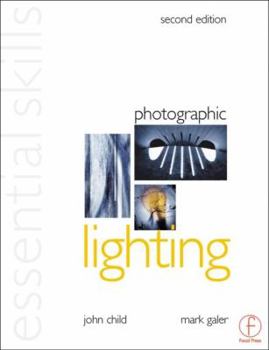Photographic Lighting: Essential Skills
Select Format
Select Condition 
Book Overview
Covers all the information that is essential for photographers to understand when working with light. New for this second edition is the 'Sensitivity and Image Capture' chapter which includes the latest on digital image sensors as well as film emulsions to help you choose the right medium for your work. Through a series of practical exercises, the student photographer is shown how to overcome the limitations of equipment and capture mediums, to achieve creative and professional results. With theory kept to a minimum, this book shows how to tackle difficult lighting conditions and manipulate light for mood and atmosphere using basic and advanced metering techniques. For captured and created imagery, TTL and hand-held metering techniques are also demonstrated. Controlling introduced lighting and ambient light together with advanced metering techniques and lighting ratios are covered. Illustrated throughout with author and student work, including a new 8-page colour plate section, this is an inspirational guide as well as a highly structured learning tool. John Child lectures in photography at the Royal Melbourne Institute of Technology, Australia - the leading photography course in the southern hemisphere. He has worked for many years as a professional photographer, with clients including Ford, Singapore Airlines, American Express and British Airways. Email: john.child@rmit.edu.au Mark Galer also lectures in photography at the Royal Melbourne Institute of Technology, Australia. He is also co-writer and teacher on their new online photography courses. He has lectured in photography in the UK and Australia and has worked commercially as a freelance photographer on corporate and editorial assignments. Email: mgaler@photography.rmit.edu.au
Format:Paperback
Language:English
ISBN:0240516702
ISBN13:9780240516707
Release Date:January 2002
Publisher:Focal Press
Length:160 Pages
Weight:1.55 lbs.
Dimensions:10.0" x 7.5" x 0.5"
Customer Reviews
1 rating
what type of photographer are you?
Published by Thriftbooks.com User , 23 years ago
I think the question is whether you are an advanced amateur or pro photographer already-someone who is looking for advanced diagrams, etc. on studio setups, etc. That is NOT the type of book this is. For someone-such as myself-who is self-taught and trying to learn or solidfy an understanding of lighting, this book is an excellent tool. It does include exercises, but by no means do they take up the bulk of the text. Most of the text is lean, clear writing that helps you understand the characteristics and behavior of light, some different choices you have for lighting, etc. As such, the book very much fills a niche for a certain audience because unlike other books, this one attempts to teach the foundations of photographic lighting. And it does that job well.






